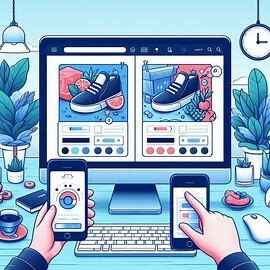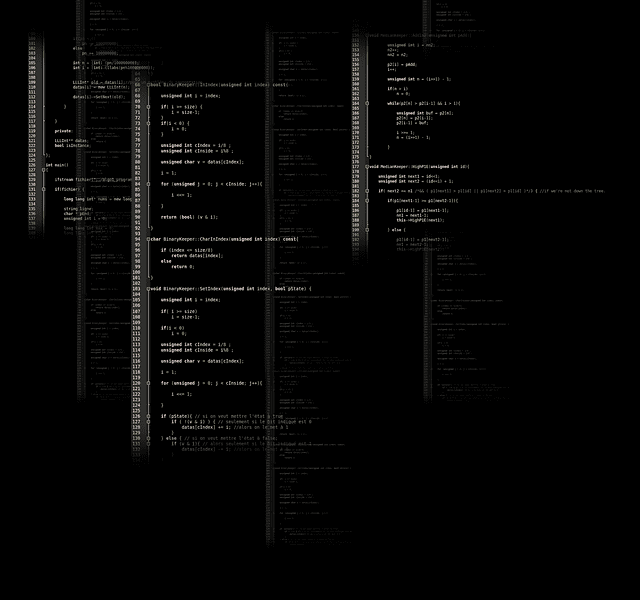Introduction
In the competitive world of e-commerce, utilizing data-driven strategies is crucial for success.
Shopify A/B testing allows store owners to tailor their sites based on user behavior, potentially turning a struggling business into a thriving one.
By optimizing elements through A/B testing on Shopify, you can significantly enhance your website’s performance and increase sales.
Quick Tips for Shopify A/B Testing Success

Before diving into the complexities of Shopify A/B testing, here are some essential tips to get started:
- Start Simple: Begin with basic tests like changing button colors or product images. As you gain experience, feel free to tackle more complex experiments.
- Define Clear Goals: Identify specific objectives such as boosting conversion rates or improving average order value.
- Segment Your Audience: Divide your audience into groups based on demographics or behavior to tailor tests effectively.
- Stay Patient: Allow your tests to run long enough to gather statistically significant results.
- Document Everything: Keep detailed records of your hypotheses, changes, and results for future reference.
Understanding Shopify A/B Testing
What is Shopify A/B Testing?

Shopify A/B testing, or split testing, involves comparing multiple versions of a webpage or marketing element to determine which performs better.
This systematic approach helps optimize your website by analyzing user preferences and behavior.
Essential Measures to Monitor in A/B Testing
It is imperative to prioritize tracking the following metrics to assess the effectiveness of your A/B tests:
- Conversion Rate: The percentage of users who take a specific action.
- Bounce Rate: The rate at which visitors leave your site without interaction.
- Average Order Value (AOV): The average amount spent per transaction.
- Click-Through Rate (CTR): The number of users who click a link or button.
- Revenue per Visitor (RPV): The average revenue generated per visitor.
Benefits of Shopify A/B Testing
A/B testing on Shopify offers several advantages:
- Data-Driven Decisions: Base your changes on actual data rather than assumptions.
- Improved User Experience: By optimizing website elements.
- Increased Revenue: Higher conversion rates often lead to increased revenue.
- Reduced Risk: Test incremental changes to avoid major disruptions.
Why Shopify A/B Testing?
The Value of A/B Testing for Shopify Store Owners
A/B testing has the potential to impact Shopify store owners significantly.
It enables you to continuously improve your website, boost sales, and enhance user experience.
Whether you’re new to e-commerce or have an established store, Shopify A/B testing can help you achieve significant performance gains.
How Shopify Simplifies A/B Testing
Shopify’s built-in A/B testing features make it accessible to users from various technical backgrounds.
There is no need for extensive coding knowledge—Shopify’s interface allows you to easily set up, manage, and analyze your tests
Comparison with Other E-Commerce Platforms
While Shopify offers robust A/B testing tools, other platforms might provide more advanced features.
Setting Up A/B Tests on Shopify
How to Set Up Shopify A/B Tests
Follow these steps to set up A/B tests on Shopify:
- Log in to Your Shopify Dashboard: Reach your store’s admin panel.
- Select “Online Store”: From the sidebar, choose “Online Store.”
- Choose “Themes”: Click “Themes” under the Online Store section.
- Customize Theme: Select the theme you wish to test and click “Customize.”
- Create Variant: Generate a version of the page you want to test within the theme customizer.
- Make Changes: Modify elements like images, text, or colors.
- Save Changes: Save the variant after making your changes.
- Run the A/B Test: Initiate the A/B test through the theme customizer, following Shopify’s guidance.
Selecting Elements and Variables to Test
Common elements to test include:
- Product Images: Compare different images to see which resonates more.
- Product Descriptions: Test tone, length, and content variations.
- CTA Buttons: Experiment with different designs and placements.
- Pricing Strategies: Evaluate discounts, bundles, or tiered pricing.
- Checkout Processes: Optimize steps and form fields.
Determining Sample Size and Test Duration
To ensure accurate results:
- Sample Size: Use statistical calculators or Shopify’s guidelines to determine the minimum sample size needed.
- Test Duration: Set an appropriate duration for your test and avoid ending it prematurely.
Best Practices for Shopify A/B Testing
- Choose Hypotheses and Goals: Define what you expect to achieve with each test.
- Segment Your Audience: Target different customer groups for more precise testing.
- Monitor Progress: Regularly track metrics and adjust as needed.
- Ensure Statistical Significance: Confirm results are statistically significant before concluding.
- Document Results: Record findings and insights for future optimization.
Common A/B Testing Scenarios on Shopify
Optimize your Shopify store by testing these scenarios:
- Product Page Layouts: Experiment with page layouts, image sizes, and color schemes.
- Product Descriptions and Images: Test different descriptions and image styles.
- Pricing Strategies: Evaluate various pricing models and promotions.
- Checkout Processes: Streamline and optimize checkout steps.
- Personalization: Test personalized recommendations and offers.
Tools and Apps for Advanced Shopify A/B Testing
While Shopify’s built-in features are robust, consider these third-party tools for advanced capabilities:
- Optimizely: For complex testing scenarios.
- VWO (Visual Website Optimizer): Offers A/B, split URL, and multivariate testing.
- Google Optimize: Integrates with Google Analytics for advanced targeting.
Challenges and Pitfalls in Shopify A/B Testing
Avoid common errors such as:
- Testing Too Many Variations: Focus on a few variations to pinpoint performance changes.
- Ending Tests Prematurely: Ensure tests run long enough for reliable results.
- Ignoring Statistical Significance: Wait for significant data before making decisions.
- Overlooking Seasonality: Consider external factors that might influence results.
- Not Segmenting Audiences: Tailor tests to different visitor segments for more accurate insights.
Future Trends in Shopify A/B Testing
Stay ahead with emerging trends:
- AI and Machine Learning: Use AI to analyze behavior and suggest optimizations.
- Predictive Analytics: Forecast impacts of test variations for strategic planning.
- Voice Search Optimization: Adapt A/B testing for voice commerce.
Conclusion
Shopify A/B testing is vital for enhancing your e-commerce store’s performance.
You can effectively optimize your Shopify store by understanding the basics, following best practices, and utilizing available tools.
Embrace continuous testing and stay updated with emerging trends to keep your store competitive and successful.
Related Articles
- Learn more in our complete guide to 12 Best eCommerce Platforms.
- Optimize your store with Shopify Add Video to Product Page Guide.
- Improve engagement with E-Commerce Conversion Optimization Strategies.
Related Resources
Thanks for Reading!

